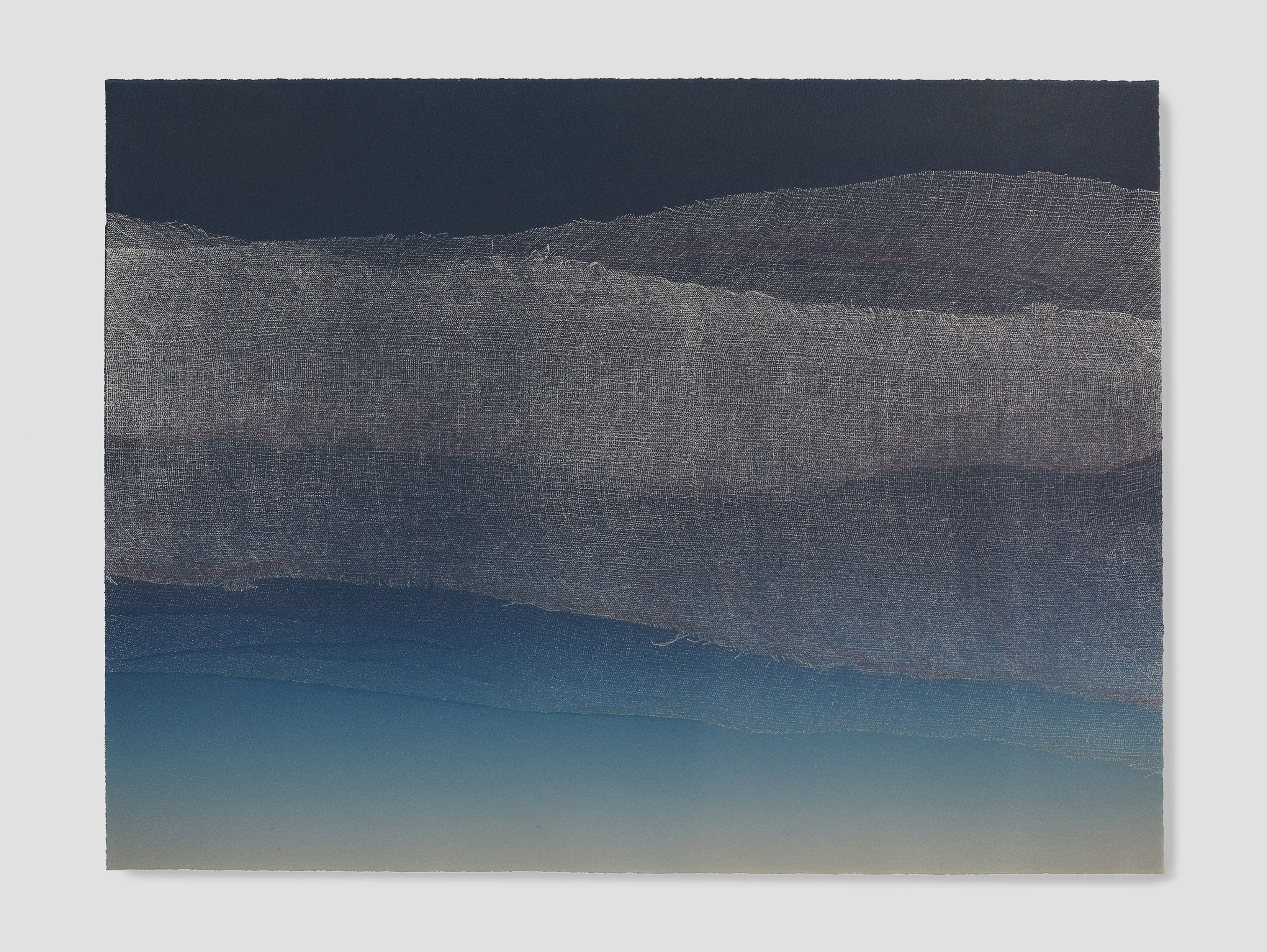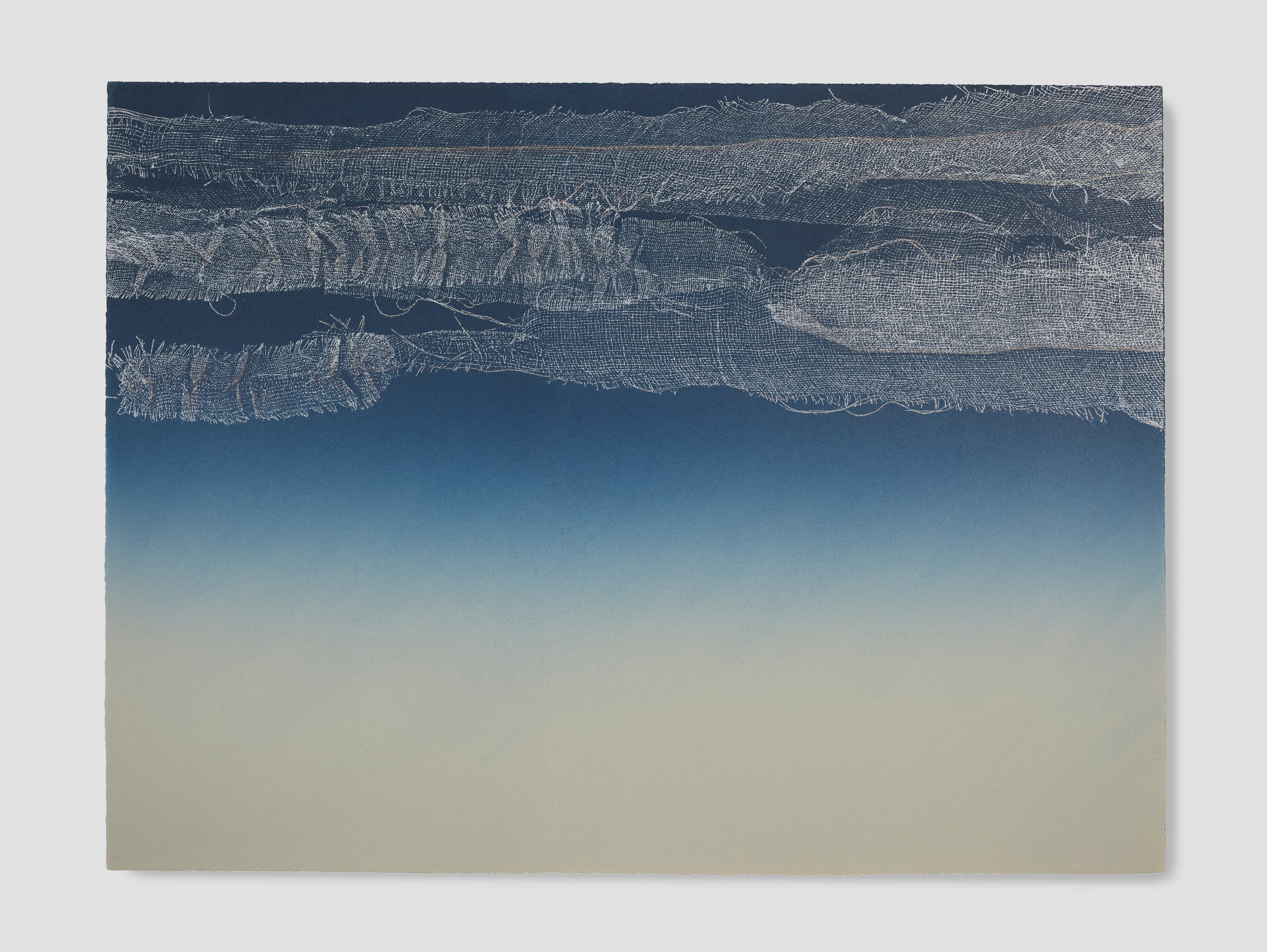
New Mexico painter and printmaker Gail Gash Taylor, born 1951, is one of the most celebrated woman artists living today, with her work represented in hundreds of public and private collections worldwide. Her finely crafted series of color lithographs, titled the Dawn Suite series, appears besides fellow art icons Helen Frankenthaler and Kiki Smith in Women in Print. Yet, her recognition wasn't always easy, especially as a young artist in the one-time "man's world" of printmaking. Curator Kylee Aragon Wallis spoke with the artist on learning how to be tough in the print workshop, and how this inner strength still guides her today.
Tell us a little bit about yourself and your work.
I’m re-evaluating everything in my life right now at 69 years old. I quit what I was doing. I got discouraged by the direction that galleries had taken, especially in Santa Fe. I’m working on a project that is taking me a year and a half. It is about the coronavirus, and it includes painting, sewing, and writing. It’s at least a twelve-month project—it’s a bit of secret though. That’s where I’m going now. I don’t want to have to deal with the market at this time. I’ve decided in the last year to quit galleries at the moment. A lot of what happened in the galleries over the years was that I got pushed and pulled in a direction I didn’t want to go. When I tried to be much more conceptual the galleries pushed against this work because it was not “sellable.” I decided I wasn’t going to paint anything I didn’t want to keep, which is an incredibly high standard. I think of the coronavirus as a worldwide holocaust, so I think its important to create work during this time. I am taking something difficult and making it beautiful in my current project. I want the world to see what I see.
can you tell us about the process of making your work? do you work from sketches or do you let the process happen as you're painting?
When I was making realistic paintings I started off in my mind’s eye first, then began to incorporate physical images into the work. I don’t sketch much but I do take thousands of photographs.
Gail Gash Taylor, Dawn Suite 2, 1983, Color lithograph.
when did you begin to work in print?
I started in undergrad with painting then took a printmaking class and fell in love with lithography. I had an incredible print instructor, Fred, who taught us by example. He was always in the studio, which inspired us. I also loved the social aspect of the printshop. There were always people to relate to during the printing process. The printshop is just a great place to be. Fred served as my mentor; he made a real difference in my life.
tell us about the dawn suite series.
I was in grad school and I went to the Art Institute of Chicago and saw a collection of prints of views of Mount Fuji. The images stuck with me—the slight changes in the sky were so incredibly beautiful. So, I knew I wanted to create a suite about the changes in the sky. Capturing the slight variation and the subtleties were important to me. The prints slowly get lighter when you line the entire suite up. The cheesecloth clouds shift slowly. These prints represent such a wonderful time in my life; it’s sad but beautiful.
Gail Gash Taylor, Dawn Suite 4, 1983, Color lithograph.
sadly, it is 2020 and women are still not being treated equally. was this gender inequality something you experienced in your career as both an artist and printmaker?
I got really tough really early to deal with men in the arts. I was lucky enough to work with people who treated me well. My time at Tamarind was wonderful. Clinton Adams and I had a great relationship. When I got my residency at Tamarind, I was told by an older printer that I would fit in perfectly with all those girls at Tamarind then he looked down my shirt! I’ve been ignored in print workshops. Some guys just couldn’t cope with working with an attractive young woman; they didn’t know how to treat you as a professional. It’s hard to remember. You try to put it out of your mind. When I was in graduate school, I went to my first critique. I had just started making this really feminine work with silverware. The spoons were female, and forks were male, a decision that felt incredibly obvious to me. I took this silverware to the critique and the male instructors laughed at me and asked, “Are the fork and spoon going to get up and dance?” I was so upset I went home and threw up. A few years later after my residency at Tamarind I was asked by those same male instructors to come back and lecture at the university.
Gail Gash Taylor, Dawn Suite 5, 1983, Color lithograph.
WHAT was your experience like at tamarind?
I went back twice—once in 1980 and 1983, and it went so well. It was the most incredible experience. It was like an orchestration, and I was the conductor orchestrating the printers. I developed a really great relationship with Tamarind. I did some lectures there; it was a wonderful time. It really is such a special and impactful place. It was one of the best times in my life—the printmaking, my career took off, and I met my husband. It all happened at the same time. It was such an important moment for me.
why lithography? what about the medium continues to intrigue you?
I always ask all my printer friends this question so I have to ask, if you had to choose any form of printmaking aside from lithography what would it be?
Wood block prints, I love wood block prints. I also love mezzotints. I love the technical stuff—I guess I love to torture myself.



